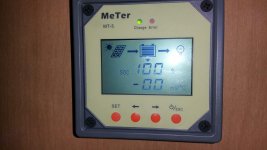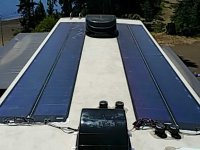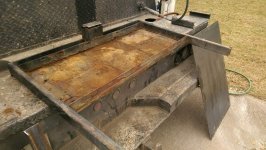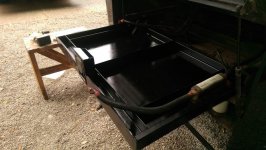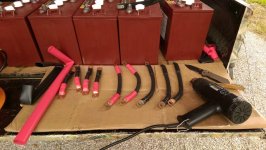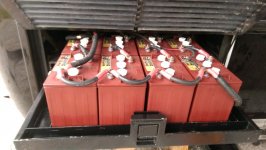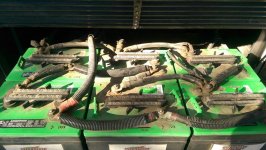Hi everyone! I did a search but finding a whole solar setup plan is proving difficult.
Picking up our new 3760EL Big Horn tomorrow morning. It currently has the residential refer and the standard 2 12v batteries/inverter/switch that come with that option. We dry camp and the residential refer was not my 1st choice but we bought it anyway.
Also buying a 3100w Champion 75537i Pure Sine small generator as support.
So I have spent the last 45 days learning about solar options. Here is what I am planning, please feel free to chime in. I am hoping for the voices of experience to correct me, if I chose a really poor option or part, or just plain forgot something obvious:
1) 1ea Magnum MS2812 2800 Watt Pure Sine inverter with 125amp charger.
2) 3ea Go Power! Overlander 160W 9.14A Solar panels (480 watts total)
3) 1ea Magnum ME-RC50 Remote Panel
4) 1ea Magnum Energy ME-BMK Battery Monitoring Kit - State Of Charge with 500 Amp Shunt
5) 6ea Trojan T-105 wired in Series and Parallel (12v - 675 ah)
6) 2/0-ish gauge welding cable short as possible to inter connect batteries and inverter. With Noalox and some decent copper terminals at the ends.
7) 3ea Noco HM426 Dual 6-volt Commercial Grade Battery boxes
8) MPPT charge controller 50a range? <<<not sure which one to get on this.
9) <<<the things I forgot>>>
Picking up our new 3760EL Big Horn tomorrow morning. It currently has the residential refer and the standard 2 12v batteries/inverter/switch that come with that option. We dry camp and the residential refer was not my 1st choice but we bought it anyway.
Also buying a 3100w Champion 75537i Pure Sine small generator as support.
So I have spent the last 45 days learning about solar options. Here is what I am planning, please feel free to chime in. I am hoping for the voices of experience to correct me, if I chose a really poor option or part, or just plain forgot something obvious:
1) 1ea Magnum MS2812 2800 Watt Pure Sine inverter with 125amp charger.
2) 3ea Go Power! Overlander 160W 9.14A Solar panels (480 watts total)
3) 1ea Magnum ME-RC50 Remote Panel
4) 1ea Magnum Energy ME-BMK Battery Monitoring Kit - State Of Charge with 500 Amp Shunt
5) 6ea Trojan T-105 wired in Series and Parallel (12v - 675 ah)
6) 2/0-ish gauge welding cable short as possible to inter connect batteries and inverter. With Noalox and some decent copper terminals at the ends.
7) 3ea Noco HM426 Dual 6-volt Commercial Grade Battery boxes
8) MPPT charge controller 50a range? <<<not sure which one to get on this.
9) <<<the things I forgot>>>

